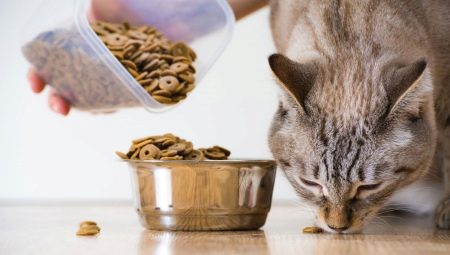Dry cat food is not easy to pick up - the market today presents a huge number of ready-made food options. They differ in composition, balance and variety of names. To choose a dry food specifically for your cat, you need to take into account some nutrition features of the cat family. In addition, it is advisable to understand the different types of this product designed for different periods of your pet's life.
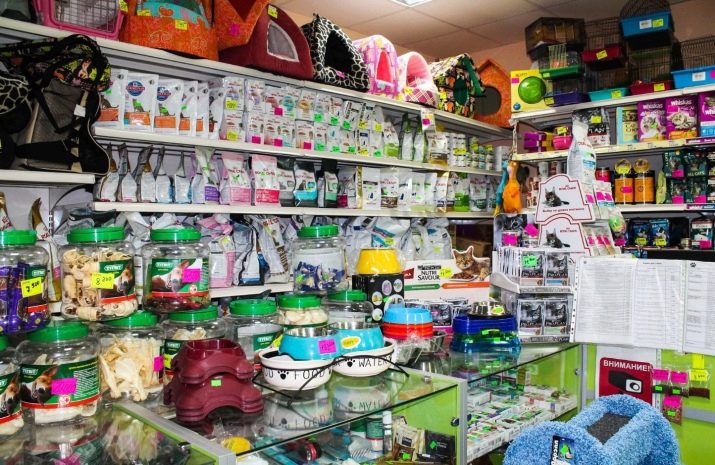
Features, pros and cons
There are many myths about making the right diet for cats. Each pet owner, veterinarian, or specialist in nutrition for cats has an opinion on this. That's why creating the perfect diet for every pet is virtually impossible.
But to ensure the healthy development of the cat, you need to know a few basic rules and follow them. Over time, when we better know our pet, we will understand what kind of food he prefers.
When buying dry food you need to pay attention primarily to the amount of animal protein that is part of the food. As we know, cats are carnivores. Therefore, such ingredients must enter the body of the pet with each meal. However, low-calorie feed manufacturers are replacing animal protein with proteins derived from plant foods. Unfortunately, the consequences of such a diet can be very unpleasant, because the digestive tract of a cat is not adapted to digest plant proteins.
The nutrition of cats has its own characteristics, depending on the age of the animal.
Kitten food
During the first month of a cat’s life, it is better to use special food for kittens for feeding, which is available as a substitute for mother’s milk. This food is given to a kitten separated from her mother, every 2-4 hours. During this period, kitten food can become a staple food.
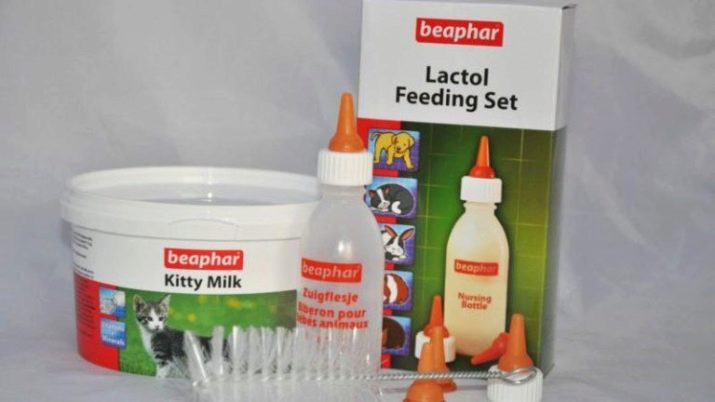
From 3-5 weeks of age, kittens are fed with a milk replacer, which is poured into a shallow dish to stimulate excommunication from the bottle. You can also apply moistened, easily chewed food, consisting of a mixture of warm milk replacer and high-quality dry feed for kittens. This mixture is given 4-6 times a day.
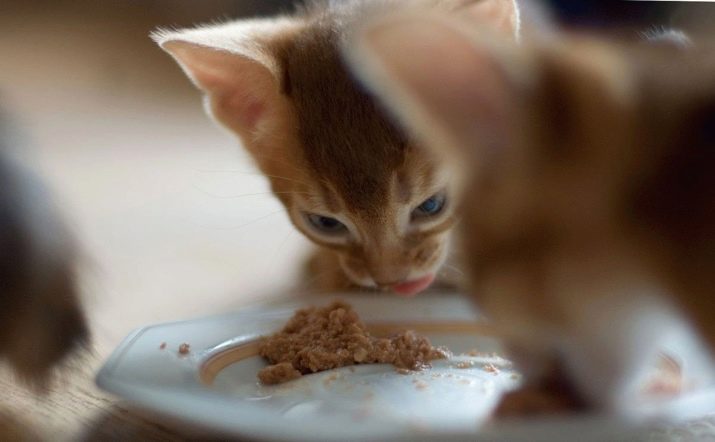
By 5-8 weeks, the kitten must learn how to chew food with confidence. He needs a diet rich in proteins. You need to feed your pet 3-4 times a day. A good diet option here may be a combination of canned food and dry food.
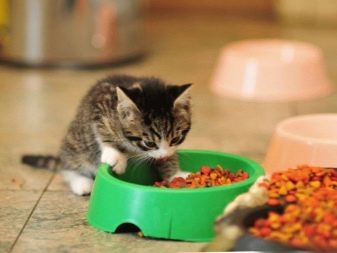

After 6 months, cats are fed 2 times a day.
Kitten food usually contains a lot of protein, calories and fats, which are necessary to maintain the healthy growth and functioning of the animal's body. Proper feeding of a kitten is that he is given a certain amount of food at a certain time. This is crucial for growing animals.
Food for older cats
From about the age of 7, cats begin to move on to the life stage of the aging phase. This transition causes changes in the health and lifestyle of the animal, expressed in variability:
- weight
- skin
- joints
- teeth
- internal organs.
If your cat is satisfied with his current diet, then perhaps there is no need to switch to a different diet. Some manufacturers produce special food for older cats. It contains ingredients that are easier to digest than standard animal feeds. Older pets often have health problems associated with impaired bowel function and kidney disease. There are specially designed dietary foods that help slow down the progression of diseases.
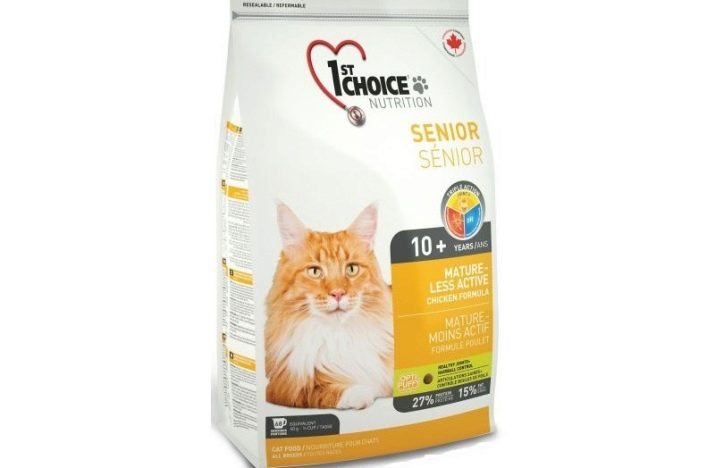
A veterinarian can help you choose the best food for your cat. Taking into account medical indications and contraindications, the current state of health and lifestyle of the animal (constantly located indoors or outdoors; leads a passive or active lifestyle), the veterinarian will prescribe the type of dry food or its combination with other types of food.
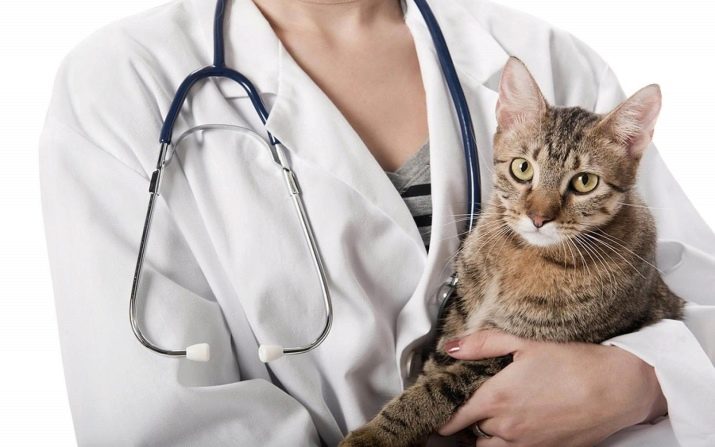
Dry feed
Cats, like all living things, need certain nutrients. Therefore, when using cat dry feed in the diet, their presence must be observed.
Water is the most important ingredient for maintaining healthy cells and the overall functioning of the body. Cats lose water through:
- lungs;
- skin
- urine;
- feces.
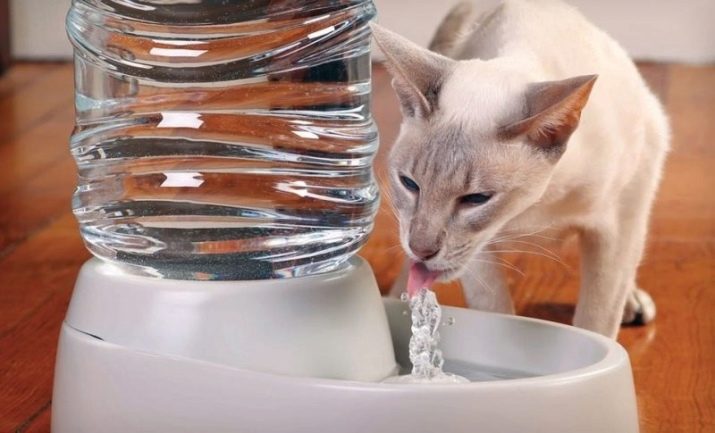
In the process of evolution, cats adapted to receive most of the water through food. Therefore, proper cat nutrition includes a protein-rich diet combined with constant access to water.
This is especially true for dry feeds that do not contain water in their composition.
Protein is the main component of the nutrition of cats, which is necessary to maintain:
- muscle
- bones
- ligaments;
- tendons.
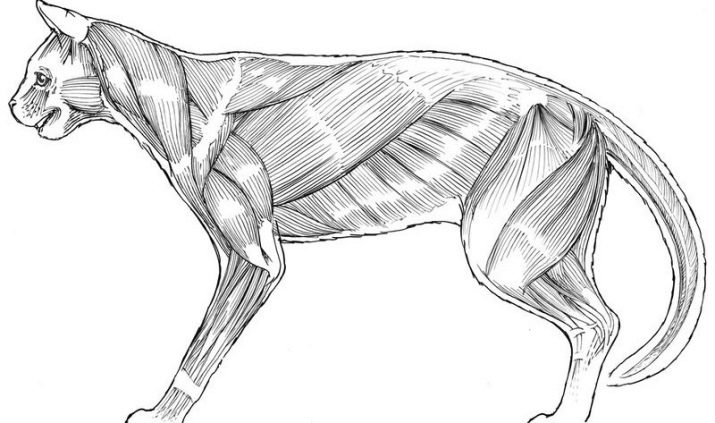
All proteins have different absorption rates. Some foods, such as fish and chicken, contain proteins that are better absorbed by cats than plant and milk sources of protein. In dry feeds can also be proteins of both animal and plant origin.
Essential fatty acids - also known as fats - are a source of energy for cats. This property of the feline makes the use of carbohydrates as energy-supplying ingredients unnecessary. Fats also contain vital fat-soluble vitamins: D, E, A and K. In addition, they contain linoleic and arachidonic acids, which play an important role in maintaining the overall health of the animal. Fat deficient cats will exhibit the following symptoms:
- growth retardation;
- dry hair, dandruff;
- lethargy;
- susceptibility to infections.
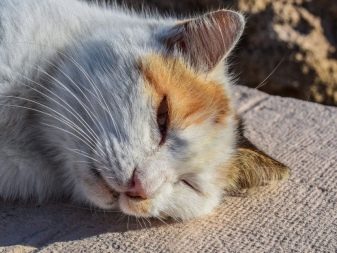
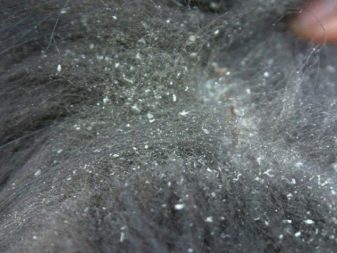
A high-quality dry food for cats should contain from 20 to 40% fat (essential fatty acids) of the total daily intake of nutrients consumed by the animal.
4. Vitamins are organic substances (found in plants or animals), which are very important components of the nutrition of cats, as they help regulate various biochemical and physiological processes in the body, including:
- increase immunity;
- support for growth and development;
- help cells and organs function normally.
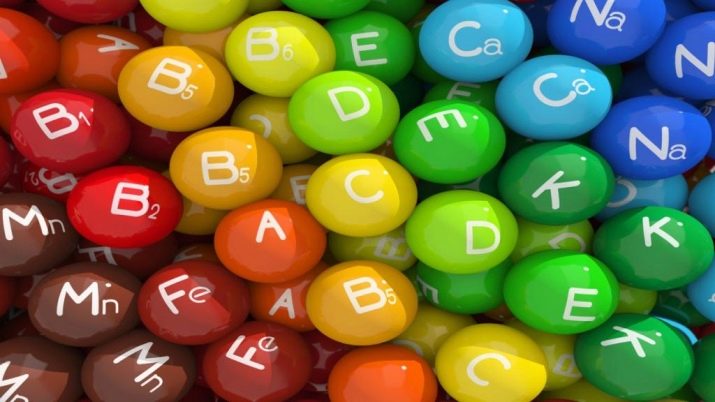
There are 2 types of vitamins: fat soluble and water soluble. The difference between them is as follows:
- fat soluble vitamins processed and stored in fat cells (the so-called fat depots) of the animal body;
- water soluble vitamins must dissolve in water before the body can use them, they cannot be stored and therefore must be constantly replenished with food.
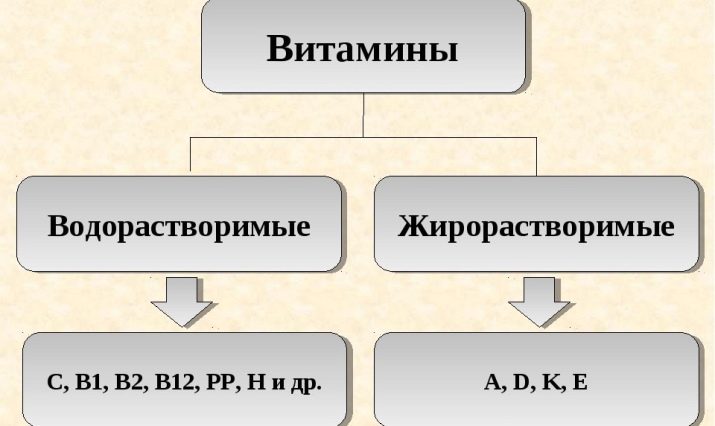
The types of fat-soluble vitamins are indicated above. Water-soluble vitamins are B vitamins: thiamine, riboflavin, pyridoxine, pantothenic acid, niacin, B-12; vitamin C.
Raw or minimally processed food for cats usually meets the needs of vitamins. Getting natural products such as chicken, meat and fish, the cat's body receives almost all the necessary vitamins. Synthetic vitamins are usually added to dry foods. They make up for the lack of natural vitamins that are removed during food processing in the production of feed.
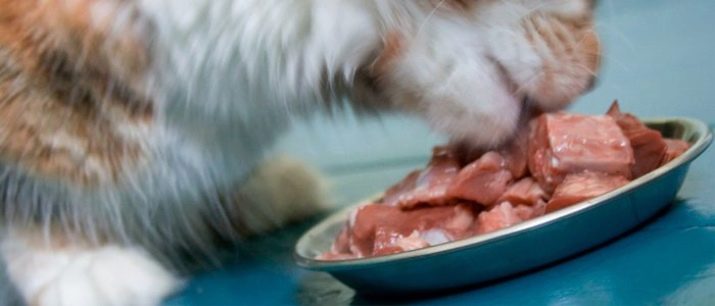
In addition to vitamins, cats require a certain amount of various micro and macro elements for the normal functioning of the body.
Minerals are inorganic substances that can be found in soil or water. Plants and animals consume macro- and microelements to regulate:
- acid-base balance;
- proper metabolism in cells and tissues;
- enzymatic reactions of the body.
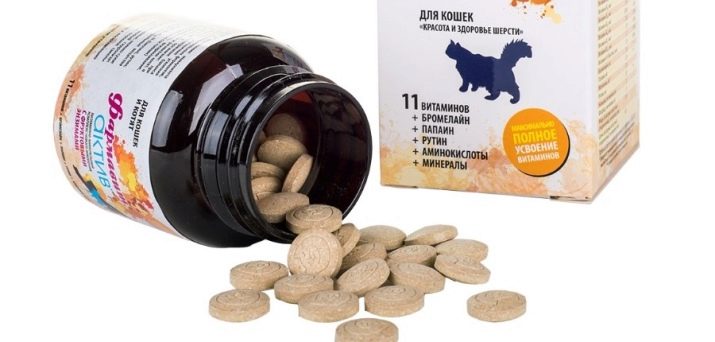
The following types of minerals should be present in the diet of cats:
- calcium;
- phosphorus;
- sodium;
- potassium;
- magnesium;
- iron;
- copper;
- zinc;
- iodine.

The dry food label usually indicates the mineral content.
All dry feeds have their positive and negative sides. They have many advantages as opposed to wet ones.
- First of all, feeding dry food is pretty conveniently for the pet owner. If the owner of the cat does not have the opportunity to cook special cat food, then the option of feeding dry food will be an excellent solution to this issue.
- Dry food contains fewer artificial ingredients. Thanks to the drying process, the nutrients contained in the feed can be stored for a longer time without spoiling or losing their value.
- An additional advantage of quality dry feed is its beneficial effect on oral hygiene: feed pellets systematically tartar over tartar and thus reduce the risk of gum disease.
- Dry feed costs cheaperthan fresh food.
- Save time - just open the package and pour the food into a bowl.
- Dry food does not spoil and therefore, you can leave it in a bowl "with a margin" for the pet. Cats usually eat a certain amount of dry food and do not overeat.
- Dry feeds have the right balanced composition of ingredientsspecially designed for the physiological needs of cats.
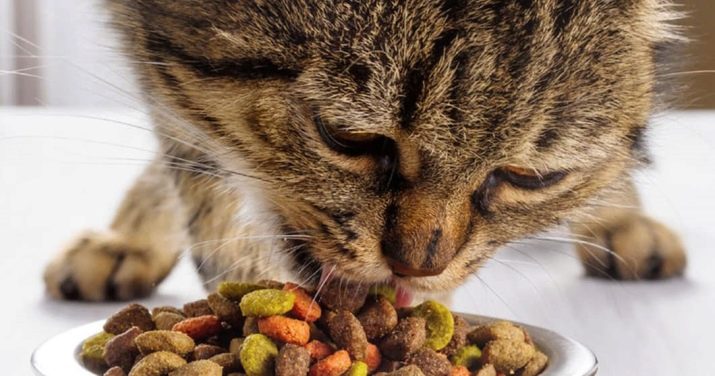
But there are some disadvantages.
- Dry food does not contain water, and the body of cats is adapted to receive a certain amount of moisture through food. Therefore, dry nutrition can lead to dehydration. Therefore, you must always put a bowl of clean water next to it, constantly replenishing it.To prevent dehydration or kidney disease, cats need to drink a little more than when they feed them with wet food. Do not forget that the cat must have access to fresh water constantly, regardless of whether it is fed with dry or wet food. Especially during the summer heat.
- Eating poor quality dry food relieves the animal’s teeth from stress, which adversely affects dental health. In addition, carbohydrates contained in cheap varieties of the product leave plaque, which eventually turns into tartar.
- Carbohydrates, which are part of many inexpensive brands of dry feed, disrupt the metabolism of cats, which can subsequently lead to diabetes.
- In cheap feed there may be flavor enhancersthat addictive animals to these varieties of food.

Structure
When viewing the list of ingredients on a dry food label, it is very important to remember that nothing is said about the exact amount of each ingredient. Nevertheless, it helps in some cases. For example, if we know which particular allergen our pet has a reaction to, then we will not purchase food containing this ingredient. In this case, the label showing the composition of the feed really matters.
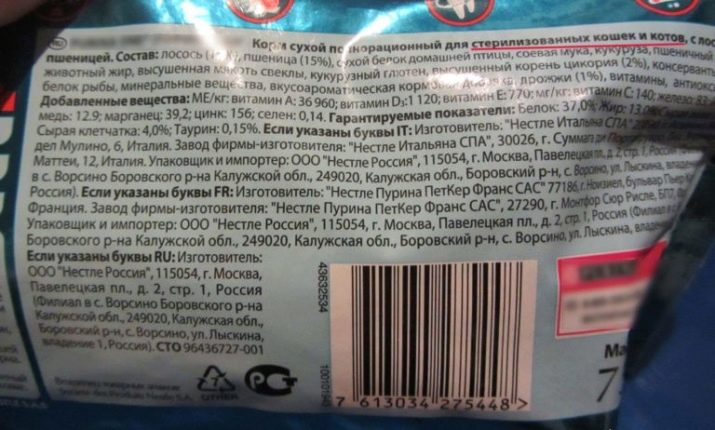
The following are a few general recommendations on how to use the composition indicators indicated on the feed label.
- In the main part of the diet of the cat should be poultry meat (chicken, turkey) or rabbit. Therefore, it is better to buy food where a high meat content is indicated in the feed.
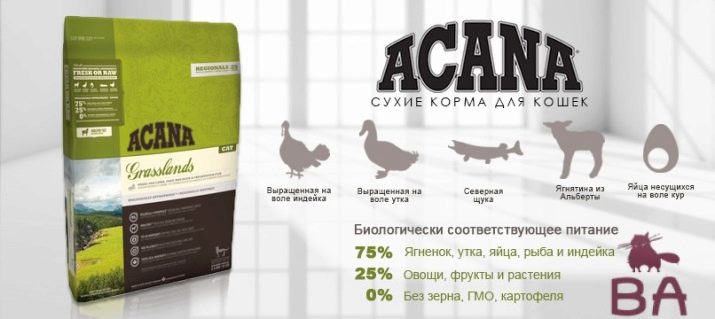
- Liver contains a huge amount of vitamins A and D. If the cat receives an excess of liver food, this can lead to hypervitaminosis. Therefore, the liver should make up only about 5% of the cat's diet. However, the liver is a cheap product, and therefore in some feeds it often appears first in the list of ingredients.

- Fish Not always desirable for cats for the following reasons:
- high probability of allergies, which manifests itself in the form of skin rashes or inflammatory bowel diseases and, possibly, asthma;
- fish toxin / mercury pollutionwhich will lead to poisoning or intoxication of animals;
- addictive - the cat then wants nothing more to eat.
If you want to feed the cat dry fish food, it is better to limit the supply of this treat to one or two times a week.
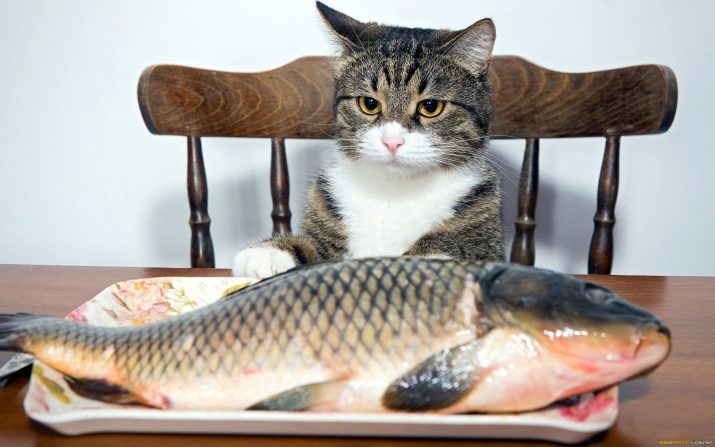
- Beef It is often a food allergen for some cats, although many cats tolerate this type of food very well.
Keep in mind that most feeds, such as Wellness, Nature's Variety, containing cereals or by-products, have a lot of fat and a relatively low protein content.
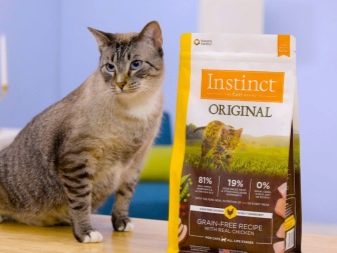
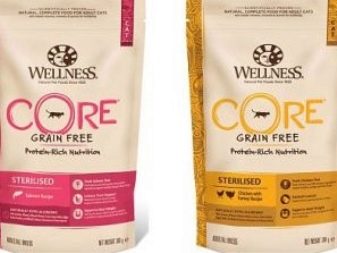
- High protein, low fat diets especially important for cats that need to lose weight. However, often high protein foods contain a large number of fish. Therefore, you need to choose food carefully.
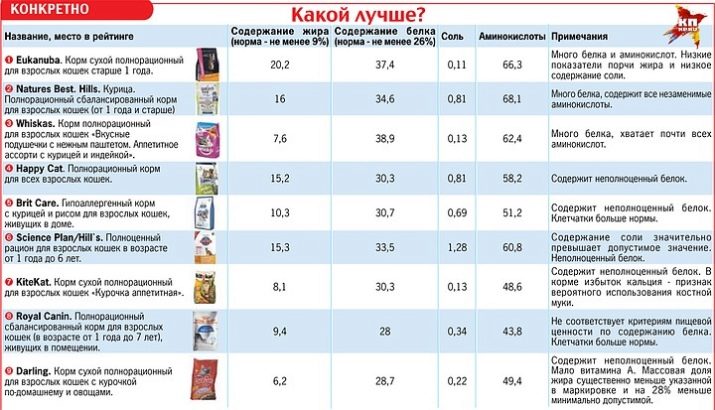
- note that wheat is an allergenic ingredient that cats do not want to give. Some companies add wheat to feed to increase the profitability of their enterprise.
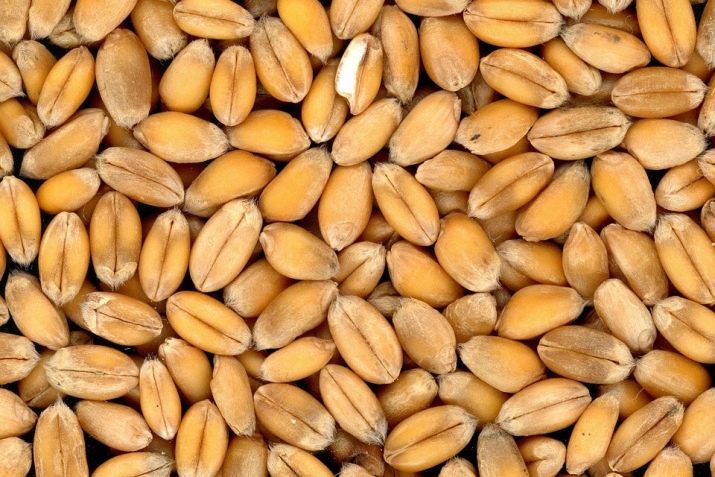
- Another important point. No need to blindly believe the labels with the inscription - "95% meat." After all, “meat” can be just a meat filling with a high fat content. Under this word, a manufacturer can mean the inclusion of both fats and proteins. If the company writes on the label “meat” - this does not mean that the feed will have a high protein content.

- So called by-products, or otherwise offal, are normal components of the diet of a carnivore. They are composed of fairly nutritious meats such as liver, spleen and kidneys. On the other hand, by-products may also include paws and feathers, which have a very low nutritional value. The problem is that the consumer cannot correctly assess the quality of the by-products contained in the feed.And the quality may vary depending on which company produces the feed, and the batch of feedstock that was used in the production process.
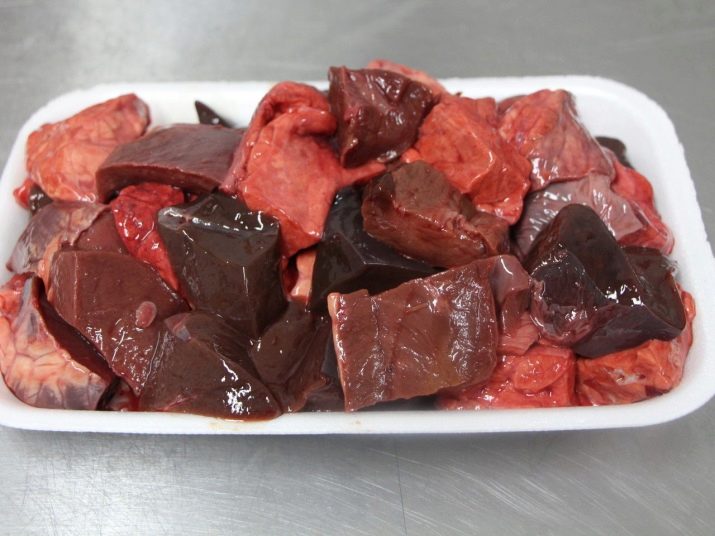
The fact that cats eat offal in the wild is beyond doubt. However, it is preferable that there is more meat from the muscles in the feed. (chicken or turkey) and only a few by-products. The combination of muscle meat with side components mimics the natural, natural nutrition of cats, which nevertheless remain potential predators.
Therefore, it is undesirable to exclude the liver, spleen or kidneys from the animal’s nutrition in order to enable it to compensate for the potential deficiency of any substances contained in these organs and tissues.
Many cats love the Friskies, 9-Lives, and Fancy Feast varieties that contain by-products. And we all know how cats can be picky about food, and how important good nutrition is to them. This is especially important when they are sick or suffer from diabetes, and should eat on a schedule.
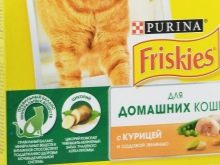
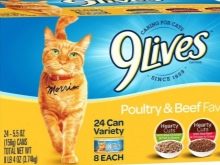

It’s far wiser to include animal by-products in the predator’s diet than to add high carbohydrate allergenic crops such as corn, wheat, rice or soy.
By the way, soy can disrupt the thyroid gland. There is no logical explanation for the inclusion of soy in the diet of cats, especially given the prevalence of hyperthyroidism in these animals.
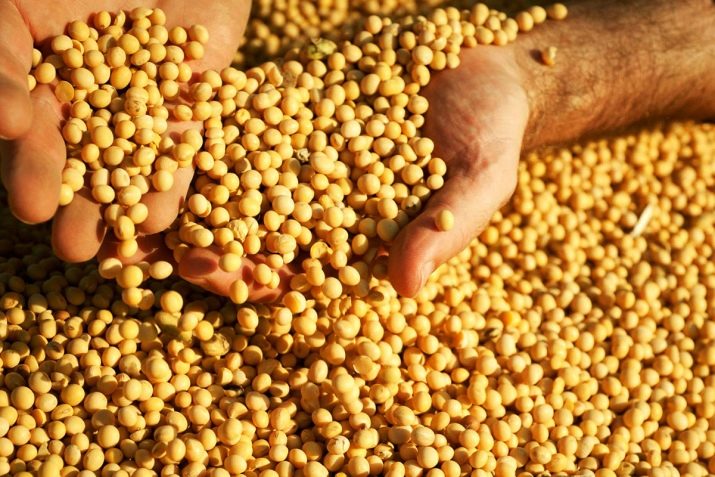
Classes
Those who choose food for the first time notice that the choice is truly staggering. Kitten food, dry food, semi-dry, dietary and natural products, nutrition with the addition of additional nutrients, medical diets, canned food, food in sealed bags, chicken-flavored food, cat food with tuna, cereals and so on. The list goes on and on in terms of ingredients, flavors and the types of cat foods available.
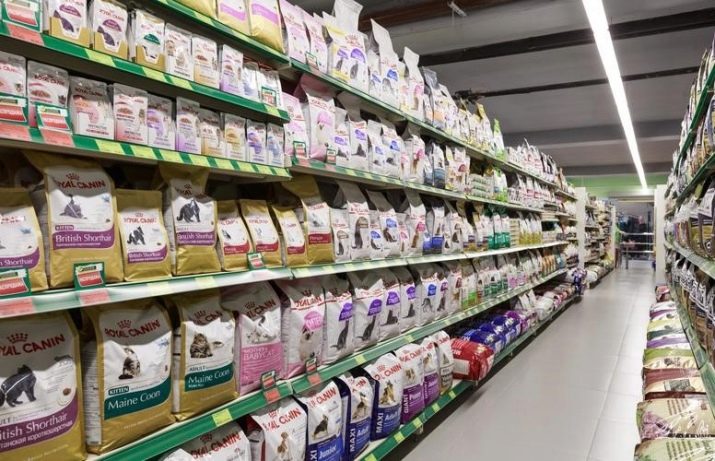
Dry feeds are usually divided into several main classes.
- Economy class. This is feed, which consists mainly of bone meal and plant components. And to enhance the taste and appeal to cats include flavors and flavors. In these feeds there is practically no natural meat or fish.

- Premium class. This type of food contains selected meat and fish components. They have a balanced composition of vitamins and minerals. From plant matter, corn is added. A veterinary certificate is issued for these feeds. This food is well absorbed by the cat's body, and due to this, the food consumption is quite economical.
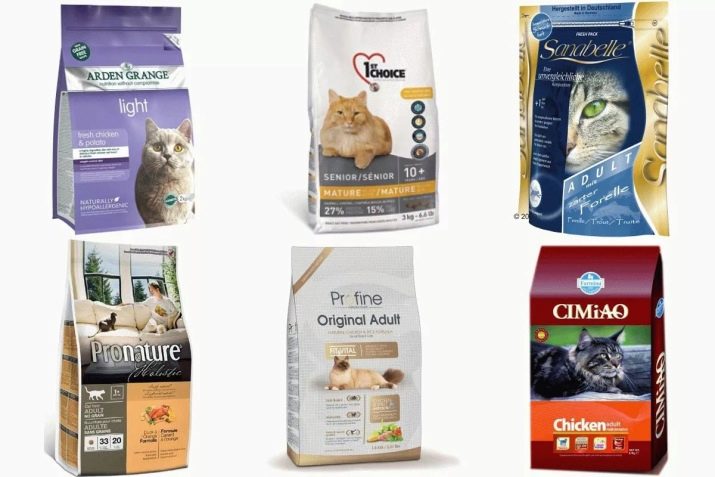
- Super Premium. The food consists of granules, which may contain salmon fillet, selected meat (turkey or lamb), eggs, rice groats and other components of the highest quality. All nutrients are balanced according to the guidelines for healthy cats.
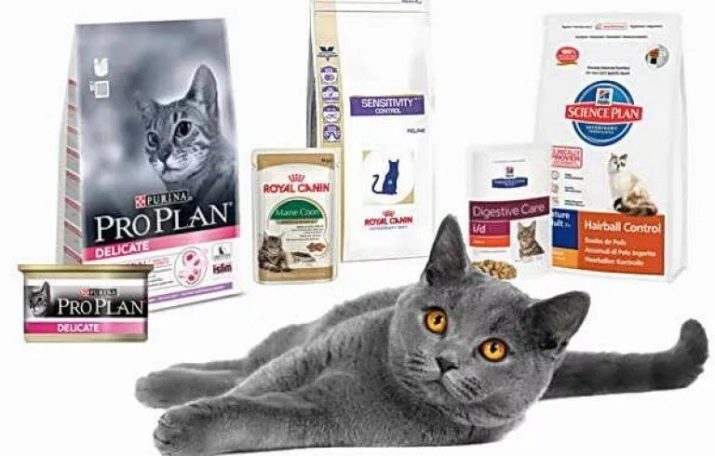
- Holistic. This is an elite series dry feed with environmentally friendly ingredients. In addition to the high content of meat components, this type of diet includes natural fruit, vegetable and grain additives. This super-balanced composition has excellent taste and is easily digestible.
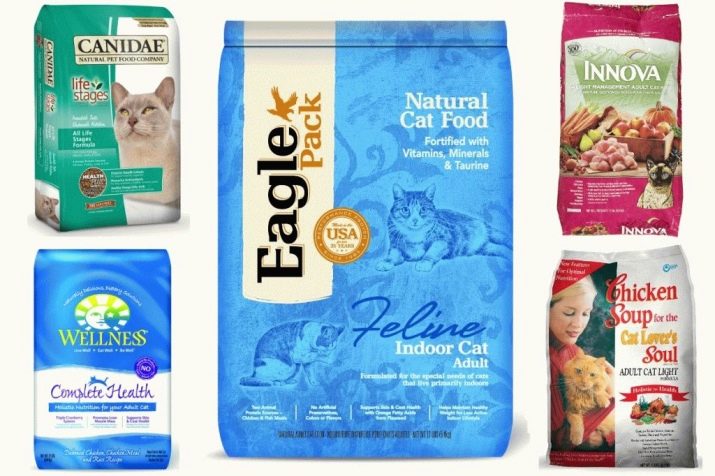
Despite the differences in grades, all dry feeds have common qualities.
- In general, these feeds have quite reasonable prices.
- Long shelf life. A single bag of food can last for several months.
- Dry feeds are not very palatable, but there is an advantage. Cats are known for being finicky eaters. They can easily turn their backs on food if their diet consists solely of a dry type of food. But the feeling of hunger still force the cat to consume dry food. And that is why your pet will always have a decent appetite. But at the same time, you can be sure that your pet will not overeat.
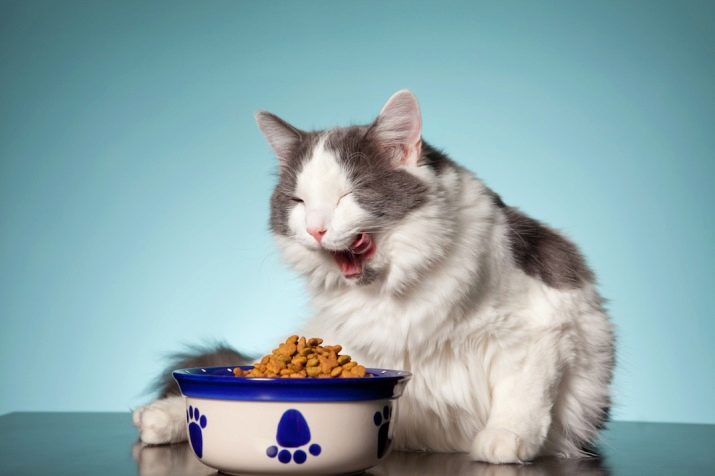
It is imperative that the cat receives the full balance of the nutrients it needs.
The nutritional needs of the pet change throughout life, so it is important to make adjustments to the diet over time. For example, kittens should consume about 2 times more nutrients per 0.5 kg of body weight than an adult cat. As well as pregnant and lactating cats, they need more food to stay strong and healthy.
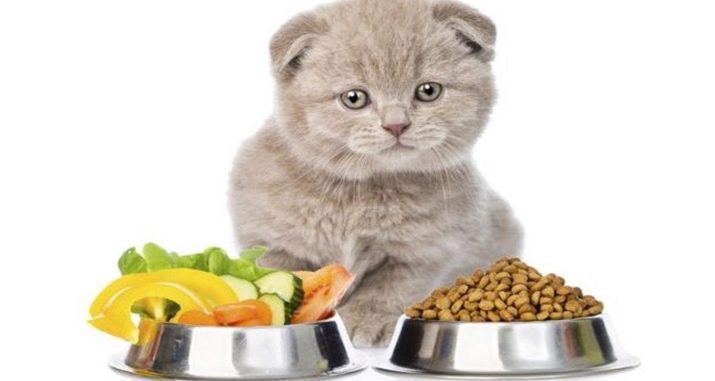
Rating of the best manufacturers
The main contents of a bowl for cats should be food containing quality dry food. But when buying dry food, keep in mind that price is not always a reflection of quality. Below is an overview of the best brands producing cat and cat food.
"Power of nature"
One of the best dry cat food on the market. Manufacturer reports:
- 95% of the protein in its feed comes from chicken from farms;
- Omega-3 and Omega-6 fatty acids derived from turkey and salmon oil;
- a very high level of protein with a low fat content - all of animal origin (protein 52%, fat 21%);
- does not contain potatoes, cereals, peas;
- includes probiotics, very important for the proper functioning of the digestive system;
- the amount of taurine is up to 3.3 mg;
- the percentage of carbohydrates in dry matter is 4% (food is ideal for diabetic cats);
- contains supplements of vitamins A, D, E and minerals of iron, iodine, calcium, copper, zinc, selenium, potassium.
Minuses:
- perhaps a high price, but for such a quality - it's worth it;
- a relatively small amount of calcium and phosphorus, but in such a high protein diet, this is probably inevitable.
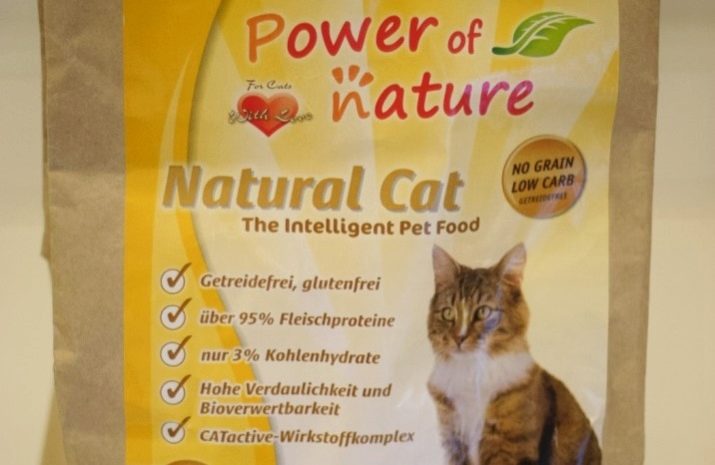
Ziwipeak
In second place in the rating among dry food for cats.
Pros:
- Omega-3 and Omega-6 acids from New Zealand mussels;
- the manufacturer writes that the feed contains lambs;
- lack of cereals, potatoes;
- a lot of taurine - 2.8 mg;
- jerky, which retains nutrients and vitamins;
- dry carbohydrate content is 10%;
- contains supplements of vitamins A, D, E and minerals of iron, iodine, calcium, copper, zinc, selenium, potassium.
Minuses:
- high price;
- produced in small packages;
- it is very difficult to get it online.
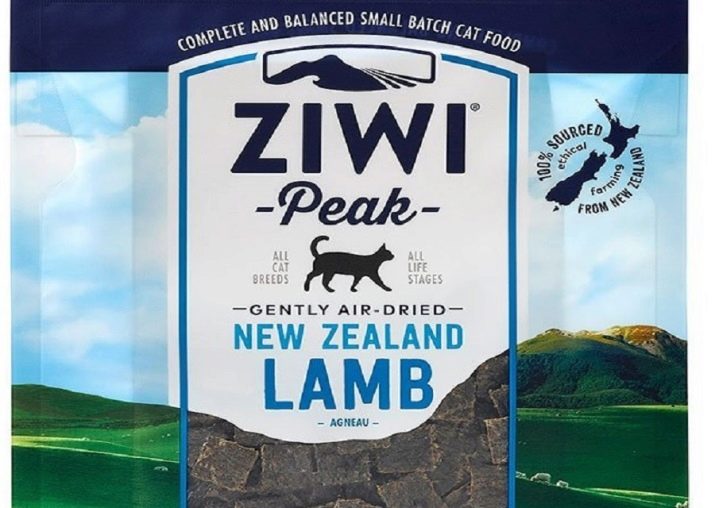
Orientjen
Benefits:
- a source of various types of meat - fresh chicken (20%), dried chicken (15%), fresh chicken liver (4%), fresh herring (4%), fresh turkey meat (4%), dried turkey meat (4%), fresh turkey liver (3%), fresh eggs (3%), fresh boneless pike perch (3%), fresh salmon (3%), fresh bird hearts (3%), bird cartilage (3%), dried herring (3 %), dried salmon (3%), chicken liver oil (3%), fat from chicken liver (2%);
- good ratio of protein and fat (respectively, 42% and 20%);
- it contains chicken, which comes from free-range chickens;
- Omega-3 and Omega-6 acids from marine fish;
- a lot of taurine - 2.5 mg;
- supplements of vitamins A, D, E and minerals of iron, iodine, calcium, copper, zinc, selenium, potassium;
- contains many fruits.
Minuses:
- unfortunately, lentils and peas are a part;
- fairly high carbohydrate content - 18%.
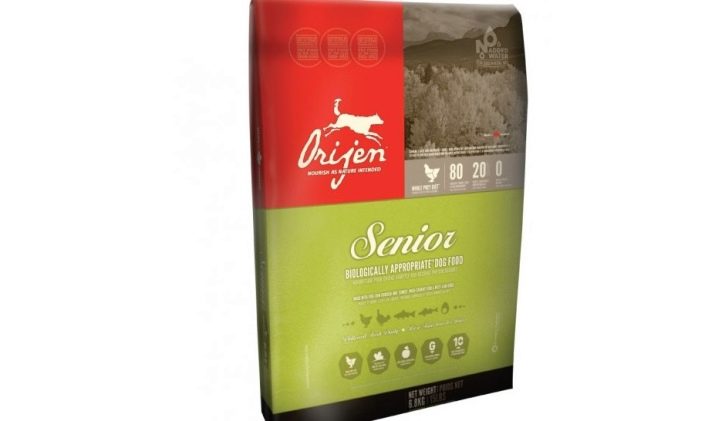
WildCat Karoo
Benefits:
- quite a lot of meat of various origin - rabbit, bird;
- a lot of fruits, vegetables and spices - thyme, marjoram, oregano, parsley, sage;
- protein - 43%, the optimal amount of fat - 18%;
- a large amount of taurine - 3.25 mg;
- no corn, soy, cereals;
- a lot of omega-3 and omega-6 acids;
- a large number of vitamins and minerals - A, D, E, B, C, zinc, niacin, copper, iron, iodine, selenium.
Disadvantages:
- low in calcium and phosphorus

Royal canin
Benefits:
- dried bird protein - digested by cats much better than any vegetable protein;
- corn - in cats, corn is well digested and absorbed in any way;
- vegetable protein isolate - is a secreted and dried protein in a form that provides fairly good digestion;
- plant fibers, which make up a small percentage of the feed, contribute to normal and healthy bowel function;
- hydrolyzed animal protein is one of the best forms for assimilation;
- Animal fats in cat foods are better absorbed and more beneficial than vegetable fats.
There are also disadvantages.
- Bird protein is obtained not only from meat, but also from feathers, beaks or claws of various species of birds.
- Corn gluten. One of the additional fillers in cat food. This is not very useful for the cat's body - it is difficult to digest, difficult to digest.
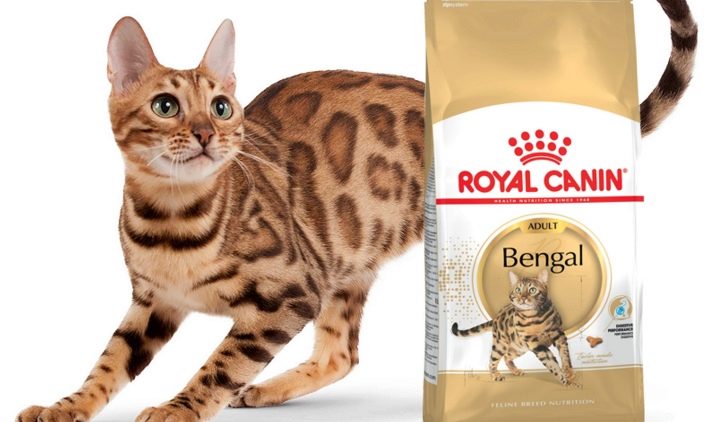
In addition, it contains a large amount of carbohydrates, which can contribute to obesity and metabolic disorders.
How to choose?
Choosing cat food seems like a simple task. But go shopping with pet food, and you will come across a huge number of options.
When choosing food, you can use the advice of professional dog handlers.
- According to GOST R 55984–2014 the composition of the feed on the package should begin with the ingredients that contain the most, then the components are listed as their quantitative content decreases.
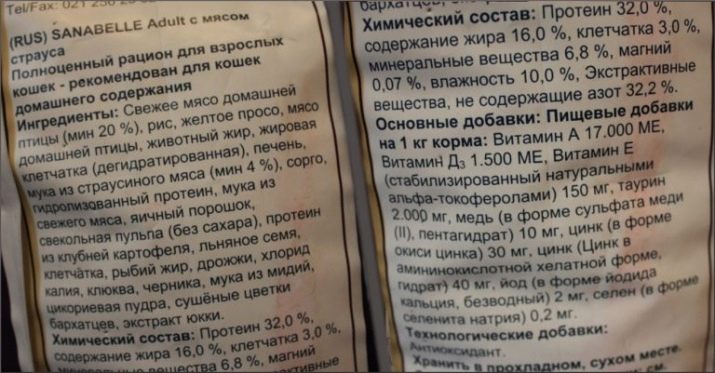
- It is advisable to purchase food, the composition of which begins with meat ingredients. Better if their number exceeds 35%.
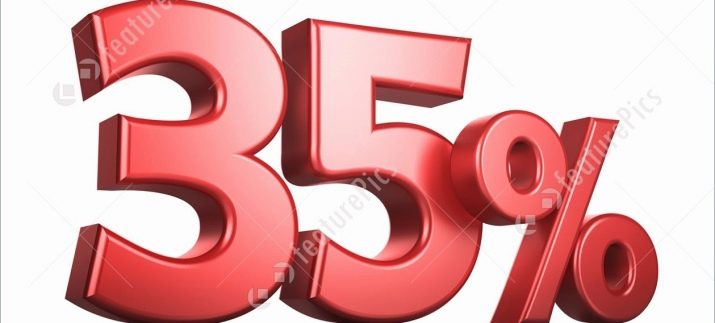
- The number of offal should not be higher than 10%.

- Protein content should be from 30 to 40% (in holistic no more than 60%).

- Better if the feed contains whole eggs, not egg powders (the latter have no nutritional value).
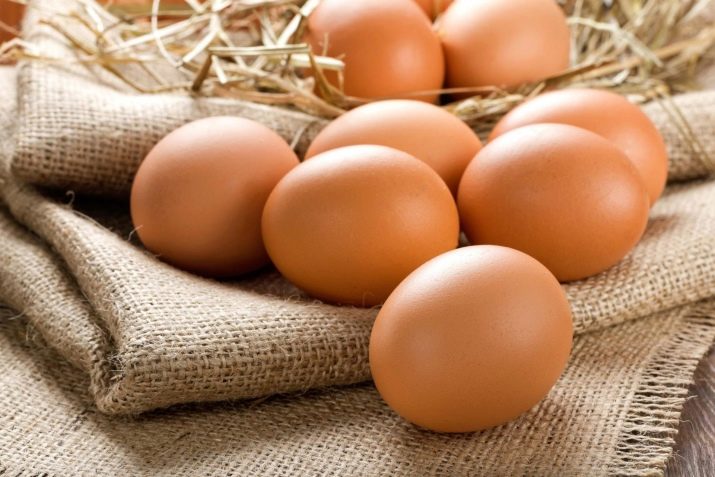
- It is advisable to buy feed in which corn and wheat are at the end of the list of ingredients. Plant fibers should be no more than 25%.

- The fat content should not exceed 20%. Foods containing pork fats and soybean oil are not recommended.
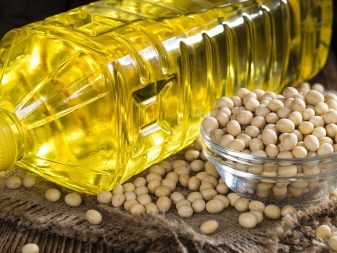
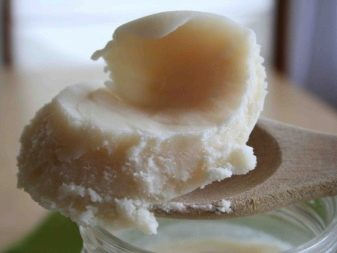
- Ash content should not exceed 10%.

- Ratio calcium and phosphorus should be from 0.9 to 1.5 parts of calcium to 1 part of phosphorus.
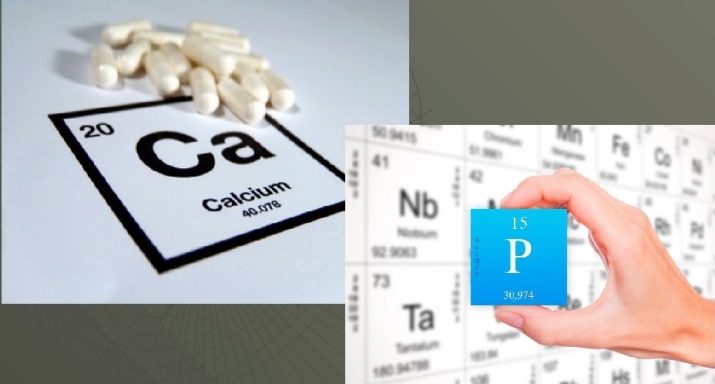
- The lower the daily recommended feed rate recommended by the manufacturer, the better the quality of the food. This means that to feed a cat, less feed is required due to better quality and balanced nutrients.
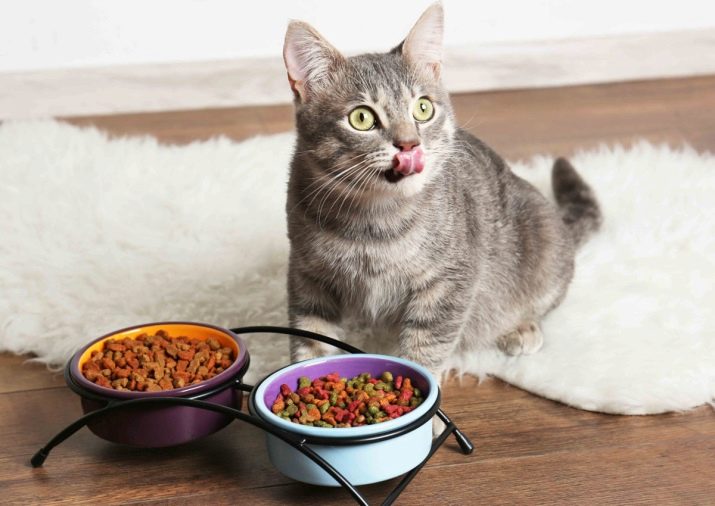
- Pay attention on the shelf life of the feed.

- Buy feeds designed especially for cats of a certain age. In addition, special feeds are available for:
- lactating cats;
- pregnant females;
- growth enhancing kittens;
- pets kept in the apartment;
- cats kept on the street.
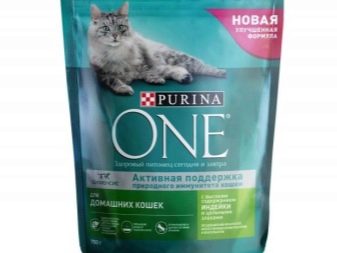
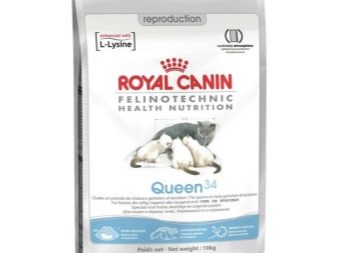
- When it comes to choosing cat food, product name plays a major role. For example, cat food “from chicken” is very different from the name of cat food “with chicken” in terms of how much chicken is in the product.


- Once you find out the riddle of the product name, photograph the ingredients indicated on the product label. This photo will come in handy in the future in order to fix the type of food in which your cat’s favorite ingredient is located.
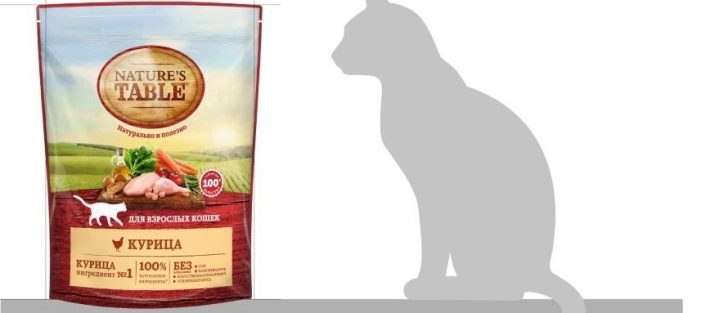
- Do not waste too much time trying to decipher the entire list of ingredients. Sherry Sanderson, MD, of the University of Georgia, says animals need nutrients, not ingredients. This is where the so-called Guaranteed Analysis comes into play. It lists the main and auxiliary nutrients found in cat food. These animals need a variety of nutrients to survive, including protein, water, carbohydrates (fiber), vitamins and minerals.
The type and amount of nutrients needed depends on the age of the cat.

- Preservatives in animal feed notorious, but in fact they perform a very important function in dry feed. These are antioxidants that prevent the loss of fat in foods. As soon as fat begins to deteriorate, it loses its nutritional value, not to mention that it can become dangerous when eaten. Preservatives may be natural or artificial.Natural foods commonly found in cat foods include vitamin E (tocopherol) or vitamin C (ascorbic acid). Artificial substances include butylated hydroxytoluene and butylated hydroxyanisole. Both chemical compounds are synthetic derivatives of vitamin E.
It is recommended to buy food with preservatives of natural origin, such as tocopherol or citric acid derivatives.
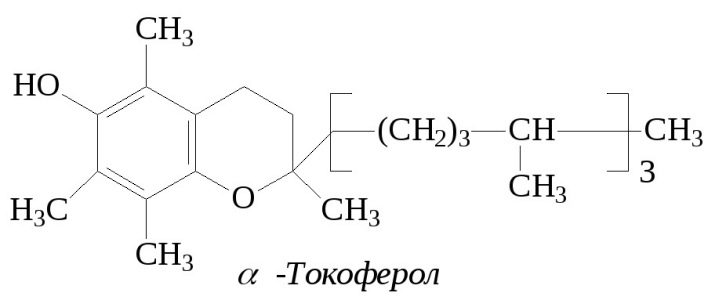
- When it comes to pet foodThere are no official divisions of the terms “natural” and “organic”. But these two terms are not the same thing. "Organic" is a method of obtaining a food source using organic substances, which are determined by the certification body. “Natural” may mean that the product does not have any artificial flavors or colorings, although chemical compounds may be used for cultivation.
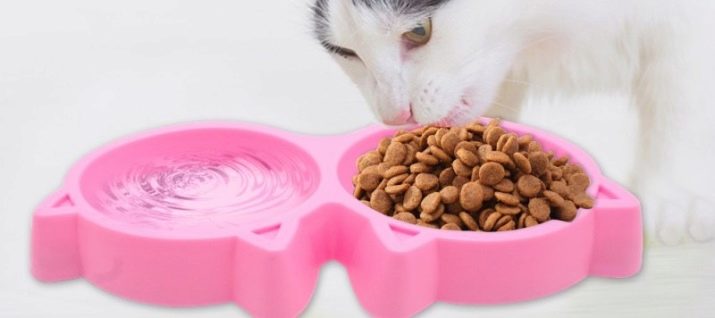
Feeding rules
The cat’s health and physical activity will depend on the proper nutrition of the cat. We list the basic rules for feeding feline.
- Many cat and dog owners give their pets leftover food from the table. This is very irresponsible because human food cannot be used for tetrapods. In cats, the gastrointestinal tract and metabolism in the body are different from the human. Their digestive system is not adapted to the digestion of spices, including salt or a mixture like Vegeta.
Such food can harm the health of the pet. For this reason, leftovers from the table should not get into cat's stomachs.

- However, nothing prevents feeding the cat with ready-made meals.. But such a diet will require a lot of effort. First, you will need to get acquainted with the needs of the cat's body and draw up a diet necessary for providing tetrapods with nutrients. Such feeding will require cooking every day. This will be time consuming.
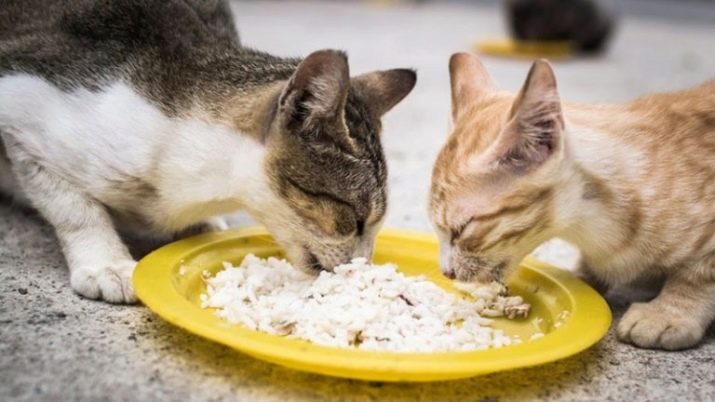
- Cats are carnivorous animals, and the introduction of a vegetarian or vegan diet can lead to health problems, they even face blindness from such a diet. They will suffer from other debilitating diseases and eventually die if they eat only vegetarian food. Unlike dogs, for which the lack of meat will not be so acute, cats need meat products for the proper functioning of the body. Vegetables and plant foods should be added to the diet. But they should not be its basis.
They need meat to survive. Unfortunately, all types of smoked or processed meats can harm cats because of the large amount of spices they contain.
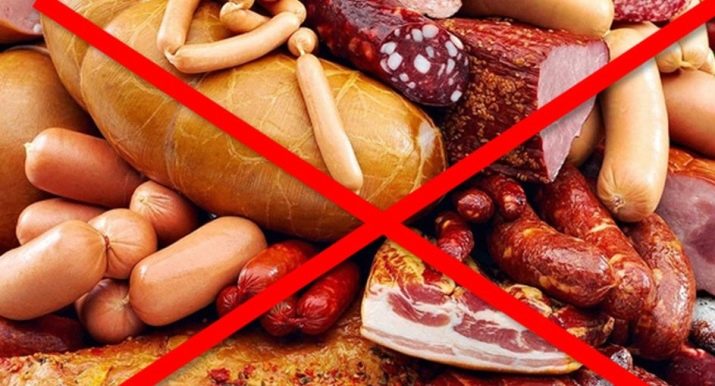
- The nutrition of cats, in the view of most people, should consist mainly of milk. In fact, adult animals do not need milk for normal life. Too much can even lead to digestive problems. There should always be fresh water in cat bowls, while milk can sometimes appear as a diet food. If you decide to give your pet a dairy product, then make sure that you feed only with specially prepared “cat milk”.
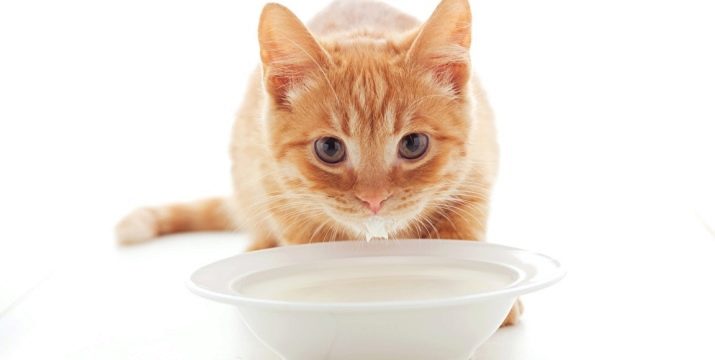
- When your cat reaches maturity (after about 12 months), you can start feeding her regularly. For a healthy pet, the diet should include the right balance of the main nutritional groups: proteins, fats, minerals, vitamins, carbohydrates and water.

- Many types of feed are designed to meet the specific needs of the cat. For example, if a cat leads an inactive "home" lifestyle and is mainly indoors, you can feed it with a special mixture that prevents the animal from gaining weight. If the circumstances of the pet’s life do not change dramatically, you can continue the usual feeding procedure until your cat reaches old age.
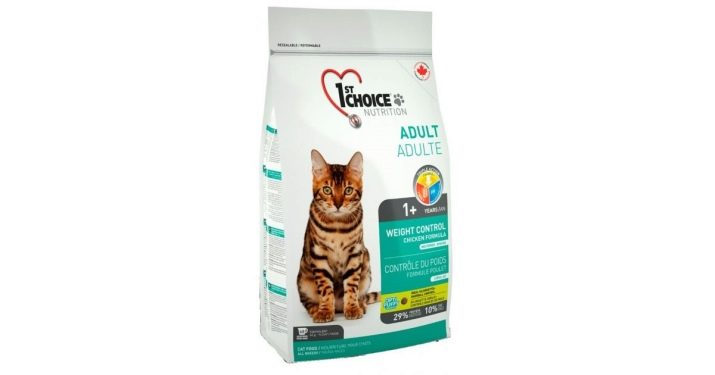
- You can feed the cat dry food or a mixture of dry and wet, depending on the preferences of the pet. For example, some cats like to be fed wet food in the morning, and given dry food during the day.

- If you choose dry food, expect your cat to chew it more actively, eat for a longer period and drink more water. Dry food stays fresh all day. Leave it with a margin so that the cat can have a bite during the day.
Unlike dogs, cats prefer to eat dry food. They find it less attractive when wet.
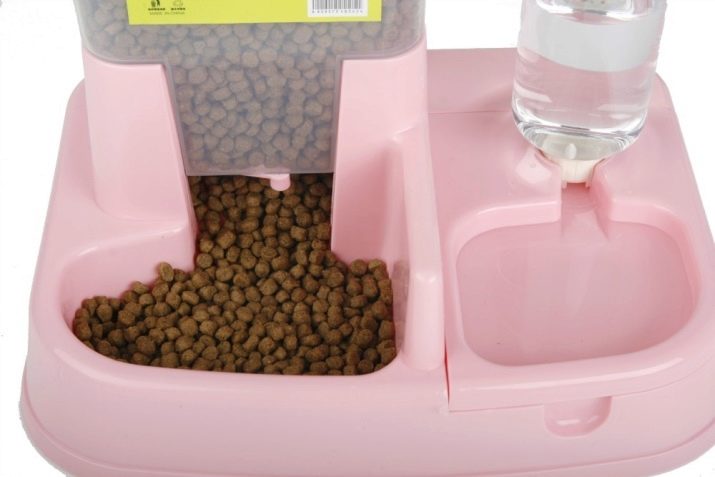
- Serve all food at room temperature so that the cat can taste and smell food. For this, you may have to withstand any products taken out of the refrigerator for a while, it takes about 2 hours. You can heat food for a short time, but be careful with hot "dishes." Avoid serving too hot or very cold food.
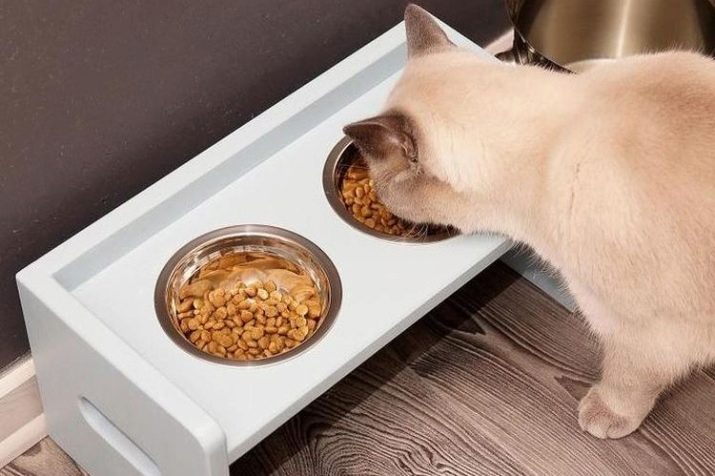
- Fresh, clean drinking water should always be available for the cat. It is better to pour water into a large metal or ceramic bowl. Continuous access to fresh water helps maintain an animal’s kidney health and reduces the risk of urinary tract infections.
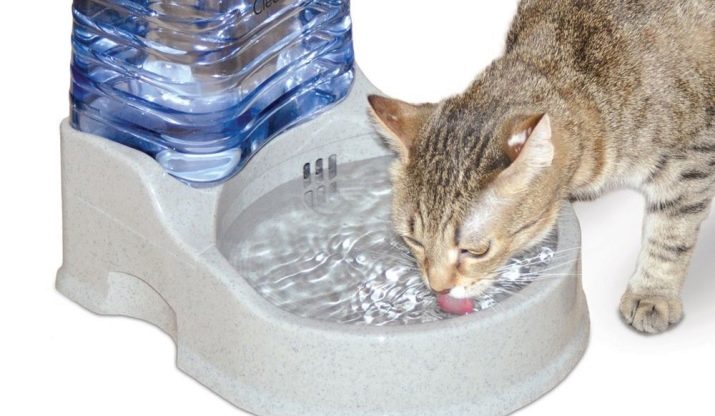
- Carefully developed cat food technology allow you to get great taste and can be used as additions to other main dishes without disturbing the balance of food ingredients. Many feeds contain special beneficial “additives”, for example, to strengthen teeth.
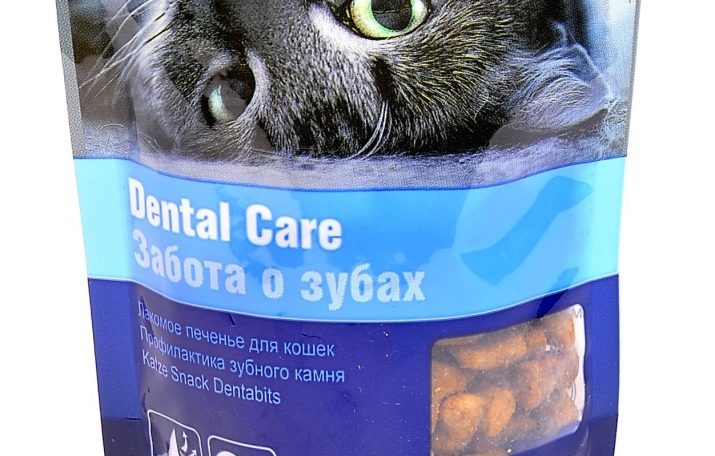
- In cats, digestion subtly responds to changes in food composition. It can quickly get frustrated if you change your pet’s diet in any way. Therefore, move from one type of feed to another gradually, gradually increasing the amount of new food for a period of 7 to 10 days. During this time, your pet will have time to get used to the new diet.
However, your cat may initially experience a small upset gastrointestinal tract. This is normal.
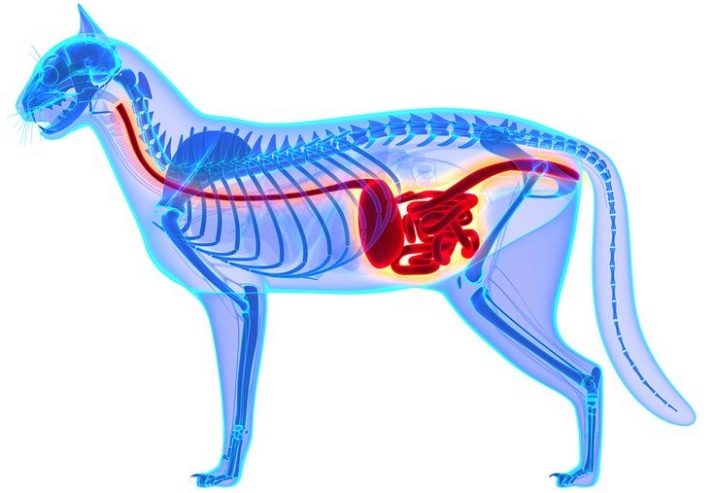
- Adult cats have a natural tendency to gain weight. Overweight animals often develop diabetes, heart and breathing problems, stones form in the bladder, and joint damage occurs. If your pet’s weight is constantly growing, try feeding the animal a specially designed dry food. This food contains less fat. Moreover, it has a sufficient concentration of all the necessary vitamins and minerals.

Veterinarian reviews
Veterinarians say that in order to live a long and healthy life, the cat needs to be provided with proper, balanced nutrition.
When choosing a suitable diet for a cat, it is advisable to be guided by the recommendations and reviews of experts.
- The composition of high-quality dry food always contains a lot of meat and a little less fat. Cats are carnivores, which means that they need nutrients found only in animal products. Therefore, choosing food, look at the composition of the food. It should include a lot of protein, a moderate amount of fat and a minimum amount of carbohydrates. A similar balance of ingredients is optimal for cats.
- Good dry feed contains more than 10 nutrients such as vitamins, minerals, fatty acids and amino acids. Therefore, it is necessary to maintain the right balance of ingredients and calories in dry food.
- Reading the composition shown on the food label is the best way to compare different types of food for cats in order to make the right choice. These data allow you to choose a balanced food specifically for your cat, given its age, illness and other individual characteristics.
- When choosing food, read the list of ingredients. They are listed in order of weight reduction. Choose the food on the label of which the meat ingredients come first.This means that the meat content will be relatively greater than the amount of other food ingredients for cats.
- Veterinarians recommend Royal Canin feed. According to their experience, cats that consume this type of food become more active, playful. Their coat becomes shiny and beautiful. In cats, the hair stops falling out (if there was such a problem).
- Grandorf feeds are also recommended. They are hypoallergenic, as they do not contain corn, soybeans, crops, flavorings, bone meal and flavor enhancers. The composition also does not include eggs and beef.
- Some experts do not recommend dry food for cats because of the risk of urolithiasis. However, with the correct selection of the type of feed and the recommendations mentioned above, it is entirely possible to avoid the appearance of this pathology.
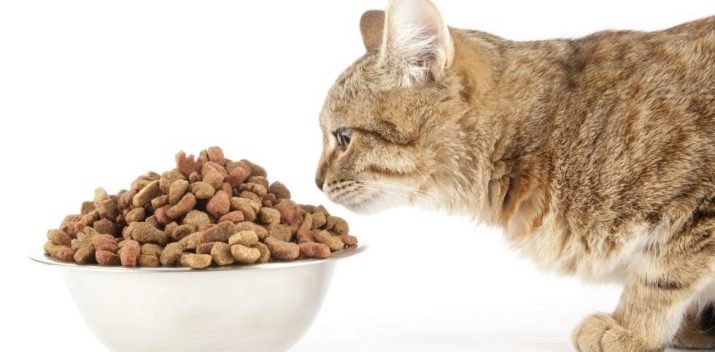
For an examination of dry food for cats and cats, see the video below.
